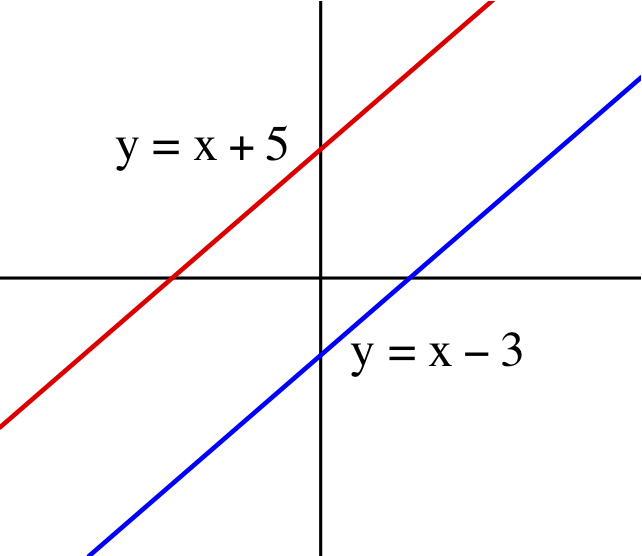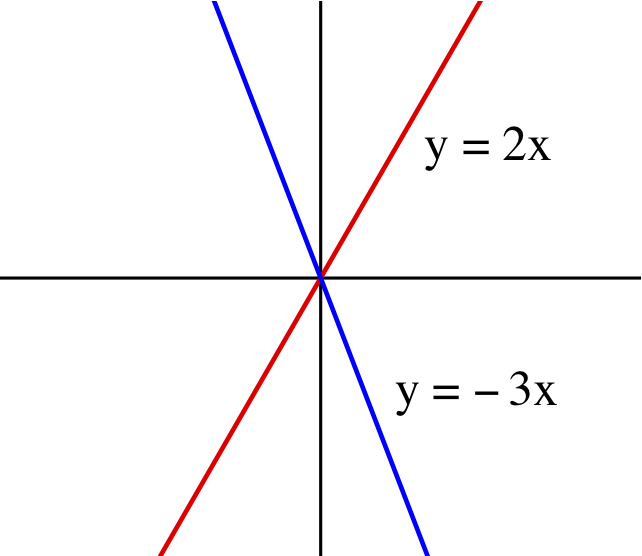Solving Inequalities with Isolation
Solving inequalities is a process that is so similar to solving equations
that many actually think they are the same thing. However, there are some
important differences. Solving an equation with the independent variable
appearing a single time involves applying the same reversible operation to
both sides of the equation. A similar strategy works for inequalities except
that some operations change the order of the inequality.
Order Preserving and Order Reversing Operations
The best framework by which we can think about operations that are used
on equations and inequalities is the framework of functions. Suppose we
want to add the number 5 to both sides of an equation \(A=B\) to get
\(A+5=B+5\). In the language of functions, we applied the function \(f(x)=x+5\)
to both expressions \(A\) and \(B\) to transform the equation \(A=B\) to \(f(A)=f(B)\).
In a similar way, if we wanted to multiply both sides of the equation
\(A=B\) by the multiplicative inverse of 2 (divide by 2), we apply the function
\(f(x)=x \div 2\) to get \(f(A)=f(B)\) or \(A \div 2 = B \div 2\).
Every operation applied to an equation or inequality can be interpreted
as a function, and every function can be used as an operation (although not
every function satisfies the requirement of being invertible).
Let an operation of interest be defined by a function \(f\). The operation is
order preserving if the inequality \(A < B\) is transformed to \(f(A) < f(B)\)
when the operation is applied to both sides. The operation is order reversing
if the inequality \(A < B\) is transformed to \(f(A) > f(B)\).
The language of functions provides an alternate interpretation. Order preserving
operations correspond to functions that are increasing. The graph of an
increasing function increases (rises) from left to right. To say \(a < b\) means
that \(b\) is to the right of \(a\). Then the order preserving property
tells us that \(f(a) < f(b)\), which means that \(f(b)\) is above \(f(a)\).
Order reversing operations correspond to functions that are decreasing,
meaning that if \(a < b\) then \(f(a) > f(b)\), or that the function is falling
from left to right.
The simplest examples of operations are the addition or multiplication by constants.

Suppose I want to add 5 to both sides of an equation or inequality, given by the function
\(f(x)=x+5\). The graph is a line with positive slope (\(m=1\)), and so \(f\) is
increasing. The operation is order-preserving. Suppose I want to subtract 3 from both
sides of an equation or inequality, given by the function \(f(x) = x-3\). Again, the slope
is positive and so this is an order-preserving operation.
In fact, the addition or
subtraction of any quantity to both sides of an equation is order-preserving.

Or suppose I want to multiply both sides of the equation or inequality by 2, given
by the function \(f(x) = 2x\). The graph is a line with positive slope (\(m=2\)), and
so \(f\) is increasing. The operation is order preserving. On the other hand, if I want to
multiply both sides by -3, our function would be \(f(x) = -3x\). This graph has a
negative slope (\(m=-3\)), and \(f\) is decreasing. In general, multiplication by
a positive number will always be order-preserving; multiplication by a negative number
is order-reversing.
Example: Solve the inequality \(-3x+5 > 1\) for \(x\).
We seek to isolate the variable \(x\) in this inequality. At the step where we apply
an order-reversing operation (dividing by -3, or applying \(f(x) = x \div -3\)), we must reverse the inequality.
\[
\begin{align*}
-3x+5 &> 1 \\
-3x &> -4 \\
(-3x)\div -3 &< -4 \div -3 \\
x &< \frac{4}{3}
\end{align*}
\]
Written in interval notation, this has a solution set
\[ \{x : -3x+5 > 1\} = (-\infty,\frac{4}{3}).\]

Inequalities sometimes involve division, which is ultimately based on the multiplicative
inverse or reciprocal. The operation of computing a multiplicative inverse (the
reciprocal) corresponds to the function \(f(x)=1/x\). If we look at the graph of
\(y=1/x\), we see something new. There are two branches to the graph. Each branch
separately is decreasing. That is, if we choose two numbers \(a>0\) and \(b>0\) with
\(a < b\), then \(f(a) > f(b)\). Similarly, if we choose two numbers \(c<0\) and \(d<0\)
with \(c < d\), then \(f(c) > f(d)\). (Look at the graph and be sure this makes sense.)
However, if we compare the points \(c < 0\) and \(a > 0\), we have \(f(c) < f(a)\). Because
of this last comparison, we can't really say that \(f\) is decreasing. So we talk about
the two parts separately, saying \(f\) is decreasing on \((-\infty,0)\) and decreasing on
\((0,\infty)\).
Because the reciprocal function is decreasing on \((0,\infty)\), we can apply the
reciprocal operator on an inequality as long as both sides are positive.
This is usually written something like
\[ 0 < A < B \qquad \Leftrightarrow \qquad 0 < \frac{1}{B} < \frac{1}{A}. \]
There is actually a similar inequality so long as both sides are negative,
\[ A < B < 0 \qquad \Leftrightarrow \qquad \frac{1}{B} < \frac{1}{A} < 0. \]
However, if the inequality involves different signs, the inequality does not change
because negative numbers are always less than positive ones,
\[ A < 0 < B \qquad \Leftrightarrow \qquad \frac{1}{A} < 0 < \frac{1}{B}. \]
Example: Solve the inequality \(\dfrac{2}{x-4} < 1\) for \(x\).
Written in terms of multiplication, the inequality is \(2 \div(x-4) < 1\). We
can work toward isolating the \(x\) by multiplying by the inverse of 2 on both sides,
which is order-preserving,
\[ 2 \div(x-4) \div 2 < 1 \div 2 \qquad \Leftrightarrow \qquad \frac{1}{x-4} < \frac{1}{2}.\]
At this point, we need to apply the reciprocal operator. Because \(\frac{1}{2}\) is positive,
this will be order-reversing if \(\div(x-4) > 0\), which is when \(x > 4\), and will be
order-preserving if \(\div(x-4) < 0\), which is when \(x < 4\).
This means that we must split our work into two different cases.
When \(x>4\), our inequality can be rewritten
\[ x-4 > 2 \qquad \Leftrightarrow \qquad x > 6. \]
The numbers \(x\) that satisfy both \(x > 4\) and \(x > 6\) are \(x \in (6,\infty)\).
(This is an intersection.)
When \(x<4\), our inequality can be rewritten
\[ x-4 < 2 \qquad \Leftrightarrow \qquad x < 6. \]
In this second case, the numbers \(x\) that satisfy both \(x < 4\) and \(x < 6\) are
\(x \in (-\infty,4)\).
The overall solution set is the union of these two possibilities,
\[ \{x : \frac{2}{x-4} < 1 \} = (-\infty,4) \cup (6,\infty). \]
As you can see, the isolation strategy can become complicated when dealing
with division. The more general strategy of using
factors and sign analysis
helps us avoid these complications and is preferred.
Go back to the Table of Contents.


